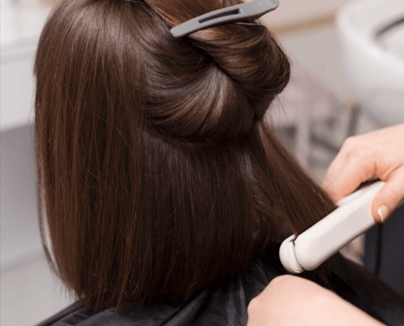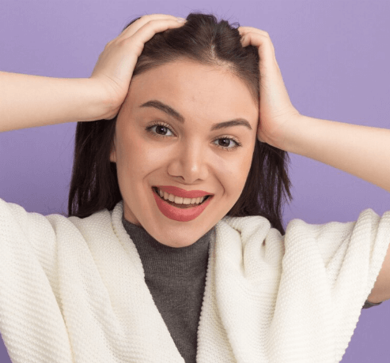Treatment Overview
The Zena Peel is a herbal-based resurfacing peel that uses natural plant-derived microcrystals to penetrate the epidermis and stimulate cell turnover. Unlike acid-based chemical peels (such as TCA, glycolic, or Jessner’s), the Zena Peel relies on mechanical stimulation and herbal actives to accelerate skin renewal, lighten pigmentation, and improve texture.
In Korean dermatology clinics, the Zena Peel is used for melasma, PIH (post-inflammatory hyperpigmentation), freckles, sunspots, acne scars, and dull skin. It is often recommended for patients who are sensitive to traditional acid peels or want a natural, gentler alternative with visible exfoliation and pigment improvement.
Purpose & Benefits
- Pigmentation Reduction: Lightens melasma, PIH, freckles, and sunspots.
- Herbal Stimulation: Microcrystals trigger exfoliation and cellular renewal.
- Skin Brightening: Improves clarity, radiance, and overall tone.
- Texture Refinement: Smooths roughness, acne scars, and enlarged pores.
- Gentler Alternative: Suitable for patients intolerant to acid-based peels.
Ideal Candidates
Zena Peel in Korea is recommended for:
- Patients with melasma or PIH who need a safer, herbal approach.
- Adults with freckles, sunspots, or uneven pigmentation.
- Individuals with acne-prone skin and post-acne discoloration.
- Patients with sensitive or PIH-prone skin unable to tolerate strong acids.
- Those looking for a natural, minimally chemical-based peel option.
Possible Risks & Complications
- Redness & Tingling: Common immediately post-treatment.
- Dryness & Flaking: Moderate peeling over several days.
- Temporary Sensitivity: Skin may feel prickly or rough during healing.
- Rare Risks: PIH rebound if sun protection is neglected.
- Milder Downtime: Less aggressive than medium-depth acid peels.
Surgical Techniques Used
- Herbal Microcrystals: Mechanically stimulate skin renewal.
- Plant-Based Actives: Provide antioxidant and brightening benefits.
- Physical + Biochemical Exfoliation: Promotes cell turnover without harsh chemicals.
- Combination Therapy: Often paired with Pico, Nd:YAG, or whitening drips.
- Protocol: Typically 3–5 sessions, spaced 3–4 weeks apart.
Recovery & Aftercare
- Immediately: Redness, prickling sensation, mild swelling.
- 1–3 Days: Skin feels rough or sandy to the touch.
- 3–7 Days: Visible peeling and flaking; pigmentation sheds gradually.
- 1–2 Weeks: Smoother, brighter, more even skin tone.
Aftercare Tips:
- Use SPF 50+ sunscreen daily.
- Apply soothing creams and hydrating serums.
- Avoid harsh exfoliants, acids, or retinoids until peeling subsides.
- Do not pick or scratch flaking skin.
- Stay well-hydrated to support healing.
Results & Longevity
- After 1 Session: Fresher glow, mild pigment reduction.
- After 2–3 Sessions: Visible fading of PIH, freckles, and melasma.
- After 4–5 Sessions: Significant pigment clearance, smoother texture, and brightening.
- Long-Term: Maintenance every 3–6 months for pigment-prone patients.
Treatment Process in Korea
1. Consultation & Skin Analysis
- Dermatologist evaluates pigmentation type and skin sensitivity.
- Zena Peel chosen for patients preferring herbal resurfacing.
2. Preparation
- Skin cleansing and light exfoliation.
- Protective eyewear applied if combined with light therapy.
3. Zena Peel Session
- Step 1: Application of herbal microcrystals massaged into the skin.
- Step 2: Microcrystals stimulate controlled micro-injury and exfoliation.
- Step 3: Neutralization and removal of residue.
- Step 4: Application of soothing serum or hydrating mask.
- Duration: 20–30 minutes.
4. Post-Treatment Care in Clinic
- Soothing creams and SPF applied.
- Optional LED or cooling mask for comfort.
5. Follow-Up
- 3–5 sessions recommended for best pigmentation results.
- May be combined with Pico toning, whitening drips, or regenerative boosters.
Unique Korean Advantages
- Natural Herbal Protocols: Preferred by patients seeking less chemical-based options.
- Safe for Asian Skin: Gentler resurfacing reduces PIH risk.
- Combination-Oriented: Commonly integrated with laser pigmentation treatments.
- Holistic Results: Brightening, texture improvement, and pigmentation fading in one treatment.
Cost Range (Estimated)
- Single Session (Full Face): USD 150 – 250
- 3–5 Session Package: USD 500 – 1,000
- Premium Program (Zena Peel + Laser + Whitening Drips): USD 1,200 – 2,000
Additional Costs:
- Consultation: USD 20 – 50
- Add-ons (Vitamin C, TXA, Glutathione drips): USD 100 – 200
- Boosters (PRP, Rejuran, Exosomes): USD 200 – 500
- LED or Cooling Mask Therapy: USD 30 – 80
Popular Clinics in Seoul
- Oracle Dermatology: Zena Peel for pigment and sensitive skin patients.
- Banobagi Dermatology: Zena Peel for melasma and acne-related pigmentation.
- Renewme Skin Clinic: Zena Peel + whitening programs for overall glow.
- View Plastic & Dermatology: Zena Peel integrated with Pico laser toning.
- Chaum Anti-Aging Center: Premium herbal resurfacing packages with Zena Peel and regenerative boosters.




